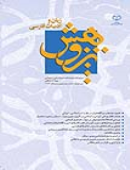درآمدي به معرفتشناسي جديد عرفان
محورهای موضوعی : پژوهشهای ادبیات کلاسیک ایران
1 -
کلید واژه: رابطه عرفان با علم منطق و دين معرفتشناسى معرفتشناسى جديد عرفان,
چکیده مقاله :
نوشتار حاضر، در سه بخش با عناوين عرفان و علم، عرفان و منطق و عرفان و دين، به بررسي نظريههاي معرفتشناختي جديد در باره عرفان مي پردازد. در بخش عرفان و علم سخن بر سر اين اصل است كه معرفتشناسي جديد عرفان، به تبع معرفتشناسي جديد دين، در دامن معرفتشناسي جديد علم پرورش مييابد. در اين بخش، چندين نظريه با دستهبندي محتوايي مورد مطالعه قرار گرفتهاست؛ نظريههايي كه از مفهوم عينيت، به عنوان قاعده بحث، تلقّّّي تحديدي ارائه ميكند يا تلقّي توسعي قريب و يا تلقّي توسعي بعيد. بخش عرفان و منطق نيز، به مطالعه چندين نظريه ديگر در باره نسبت ميان اين دو پديده مىپردازد تا از اين رهگذر، جنبههاي عقلاني و غير عقلاني تجربه عرفاني را بررسي نمايد. اين بخش با طرح سه دسته نظريه غيرمنطقي، منطقي و فرامنطقي بودن اين نوع تجربه پايان مىپذيرد. در بخش رابطه دين و عرفان نيز دو تلقّي از دين؛ يعني سنت ديني و تجربه ديني مبناي دو نظريه در رد و قبول نسبت ميان آن دو قرار ميگيرد تا در كنار نظريه سوم؛ يعني فرا ديني بودن تجربه عرفاني، نمايانگر تشتت آرا صاحب نظران در اين زمينه باشد. به طور كلى، مي توان گفت درباره نسبت عرفان با علم، منطق و دين سه دسته نظريه قابل شناسايى است: نظريههاى نفيى كه معتقد به غير علمى، غير منطقى و غيردينى بودن تجربه عرفانى هستند. نظريههاى اثباتى كه به علمى، منطقى و دينى بودن اين نوع تجربه باور دارند و نظريههاى تباينى كه آن را فراعلمى، فرامنطقى و فرادينى ميدانند. بىگمان، از اين ميان، نظريههاى دسته سوم كه معرفتشناسى جديد عرفان در واپسين گامهاي پيشرفت بدآنها دست يازيده است، با تجربه عرفانى، همسويى بيشترى دارد.
This essay deals with the new epistemology theories in three sections titled “mysticism and science”, “mysticism and logic” and “mysticism and religion. In the mysticism and science sectoin, the issue discuseed is that new epistemology on mysticism well as the new religion epistemology is developed through new science epistemology. Some theses with content based classification are studied in this section, the theses upon the objectivity concept as the discussion principle provides a threatening perception or near wideninig conception or far widening conception. The mystic and logic section studies some other theses upon the relation between these two phenomenons in order to study the conceptual and non-conceptual aspects of mysticism. This section ends with putting forward the logic, non-logic and ultra logic dimensions of the experience. In this section, the relations between religion and mysticism and also two conceptions from religion, namely the religion and empirical tradition, is put between the two theses for accepting and rejecting the tie between them along with third theses, mystic experience being ultra religion, reveals the scattering of the thesis in this regard. Totally, three types of thesis can be identified about the mysticism, science and logic and religion. The theses which believe in mystic being non-logic and non-religious. The proving theses which believe in being logic and religious of this type of experience and the clashing theses which regard it as ultra science, ultra logic and ultra religion. Undoubtedly, the third groups of theses reached by epistemology in the last stage of development are in line with mystic experience more.

